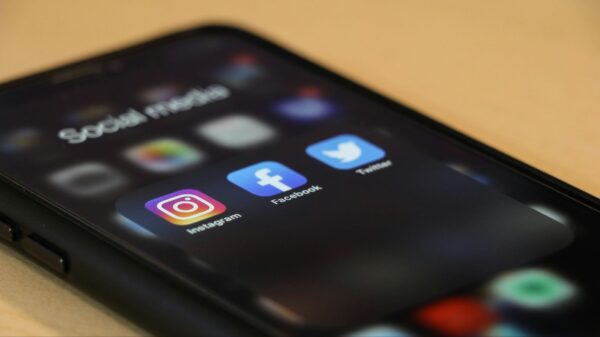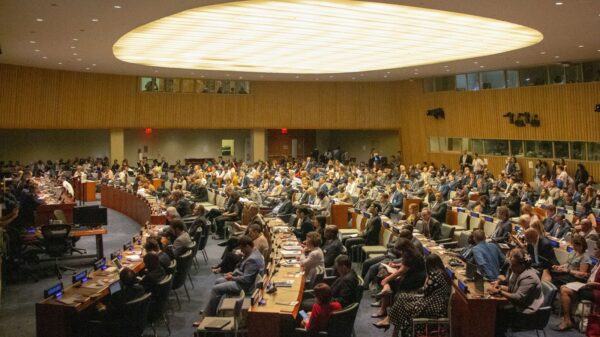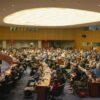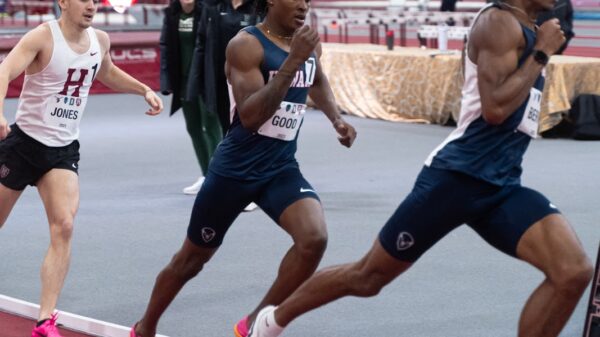
Hot water, air conditioning and other amenities were restored to Howard Plaza Towers on Sept. 25 after a week of continuous on-and-off power outages due to a ruptured power cable.
Howard officials communicated via email that the “crippling” situation was out of their control as they dealt with a multimillion-dollar blackout affecting several campus buildings.
Some students were displeased with the response from the university after some reported they experienced a week of cold showers, dirty laundry, broken elevators, dark hallways and stairwells, Wi-Fi connectivity issues, generator exhaust fumes and humid rooms reaching up to 80 degrees.
All buildings affected by the outage are currently running on generator power, according to Cedric Mobley, assistant vice president of strategic communications, media and editorial services.
“Power may again be disrupted” as repairs to another faulty cable owned by the university are completed on a timeline that “is yet to be determined,” he said.
But HUSA President Jay Jones said there is no reason to assume there will be a significant or extended loss of power, hot water or air conditioning to the Howard Plaza Towers dormitories anytime soon.
The timeline
On Sept. 18, a contractor damaged a PEPCO electrical cable while working on a demolition project behind the Interdisciplinary Research Building, causing a loss of power to five university buildings, including the Plaza Towers dorms.
Power to the dormitories was periodically restored but failed between Sept. 18 and 25. According to physical facilities management, planned power outages to complete restoration work and install generators, repair delays and unexpected cable damage caused by system faults and power fluctuations all produced periods of limited power that have spanned for hours or days.
According to company spokesperson Rod Wilson, PEPCO completed repairs to the cable that caused the first outage on Sept. 22, however, a repeat outage was caused by Howard-owned equipment on Sept. 24, which the university is still working to repair.
Wilson said PEPCO teams will be in close contact with Howard until full service is restored.
In emails sent to Towers East residents, building management said the generators powering the dormitory were shut down and moved twice due to safety hazards caused by the emission of exhaust fumes and a damaged air filter, causing extra delays in the full restoration of power to the dorms.
The emails also told students their laundry rooms and elevators would be closed, emergency lighting would be used and their hot water and air conditioning would not work.
The control panel of the air conditioning system in Towers East was also damaged on Sept. 23. It was repaired two days later, ending a week-long cycle of limited facility usage.
The outage
The power outage affected five campus buildings, including the Howard University Cancer Center and part of the Howard University Hospital. However, news and backlash about the situation have centered mainly around the Howard Towers Plaza dormitories and the 2,000 students who live there.
Some residents of the dorms addressed the situation via social media, such as Amailee Crisp, a sophomore psychology major from Los Angeles.
Crisp posted a video on TikTok that garnered more than 50,000 views, stating “POV: u go to Howard University.” In the video, Crisp is seen walking through pitch-black stairwells and hallways.

Multiple students expressed their opinions in the “Towers East” channel on GroupMe, a mobile group messaging app.
Aysha Dasilvio, a junior health science major and psychology minor from Jacksonville, Florida, wrote to the more than 700 students in the chat that the university needed to do better with “the deplorable conditions” students live in.
Another student, Mitchy Wright, a psychology major and biology minor, added, “It’s so hot I can’t function.”
Josiah Dickerson, a sophomore chemistry major from New York, shared a video he took of exhaust fumes coming out of a generator near Towers East to the chat.
Dickerson said his room smelled like gas for multiple days, making him “very lightheaded” and “dizzy.” He also said he woke up “sweating every morning,” did not have clean laundry and experienced Wi-Fi connectivity issues, creating “the biggest inconvenience you can ever have.”
But other residents expressed less charged emotions about the situation.
Sophomore honors biology major and chemistry minor, Kendall Buycks, said the situation was “inconvenient but still functional,” as students still had running water and working power outlets.

Asia Moncrief, a sophomore political science major from Atlanta, is the creator of the “HU Policy Movement” GroupMe channel. The group contacted local news organizations, and Moncrief was interviewed by Washington’s Top News (WTOP) about the power outage.
“NBC called me this morning about this story, and I called Fox 5 News last week too,” she said
Moncrief said the group is “fighting for change” and may eventually bring their concerns to the city.
“This is not an anti-Howard movement group,” said Moncrief, noting she just wants to “be as comfortable” as possible given how expensive she feels the dormitory is.
Jay Jones, the president of the 64th administration of HUSA, shared that her administration has been in “constant communication” with the university and student body to fix a situation that “wasn’t the university’s fault.”
HUSA also provided information and updates about the situation to the student body via GroupMe.
She said that there was “accuracy” in the concerns students have expressed about the situation, especially regarding accommodations, which is a “longer-term conversation” HUSA is having with the university.
Jones said she supports multifaceted solutions to student problems. She wants HUSA to assist and advocate for students along with their individual advocacy through speaking to “external stakeholders.”
She also stated that students should “make sure that the full and accurate story is being told” when speaking to the press and on social media, as she feels students left out key details about what the university was doing to respond to the power outages.
Communication and updates from the university, while consistent, had failed to account for the full scope of the issues and inconveniences the student body encountered. While the use of emergency lighting was mentioned, other issues, such as a lack of hot water and air conditioning, were repeatedly not addressed.
The email updates also repeatedly provided inaccurate information, such as there being no disruption of hot water in the Plaza Towers, and inaccurate deadlines, such as stating full restoration of power would be completed by Sept. 19.
Accommodations from the university, such as fans and utilization of other dorms’ community bathrooms, were only communicated to students the evening of Sept. 24 by building management via email, almost a week after students began experiencing issues.
Other accommodations, such as “24-hour concierge service, cooling stations, fans and counseling services,” were explained via email the next day. Accommodations addressing other issues, such as flashlights, alternative laundry and Wi-Fi services or alternative housing, were not provided.
Copy edited by Camiryn Stepteau
Correction: A previous version of this article misnamed PEPCO spokesperson Rod Wilson as Ron Wilson.













